How to Recover Deleted Emails on iPhone or iPad
Accidentally deleted Emails from your iPhone iPad whereas finding out they are still useful later? Don’t worry too much, this article will show you how to recover deleted Emails on your iPhone iPad.
iOS Data Recovery Tips
- Top iPad Data Recovery App
- Recover Deleted Files on iPhone
- Recover Deleted Files on iPad
- Photos Missing from Camera Roll
- Find Deleted iPhone Messages
- Recover Call History on iPhone
- Recover Notes on iPhone
- Recover Reminders on iPhone
- Retrieve Safari History on iPhone
- Retrieve Videos from iPhone
- Recover Songs from iTunes Library
- Get Back Voice Memos on iPhone
- Get Back Voicemail on iPhone
Emails are usually used to communicate by sending electronic texts, files, links, images, etc. You can send and receive emails with friends, families, and workmates. Therefore, the Mail app on iPhone stores important private data.
However, data loss always happens in our daily life. Among multiple reasons, there is one funny reason is that we accidentally deleted it by ourselves. There is no exception for Emails, as one of the most mistakenly deleted types of data. Fortunately, you can easily recover deleted Emails on your iPhone or iPad by following the Methods introduced below, no matter who your email provider is.
Recover Deleted Emails on iPhone iPad by Using Undo Feature
You may not aware that Apple has a useful but not known Undo feature. Apple barely publicizes it and most users do not know this feature even when they spare effort to retrieve deleted data. The Undo gesture supports most common Apple’s own apps, fortunately, including Mail. So, now, check the following steps to see how to recover deleted emails on iPhone iPad with Undo gesture.
Step 1. On your iPhone iPad, with running the Mail app, select an email and hit the trash button.

When you Try to Put an Email into Trash
Step 2. Once you realized you deleted the wrong email just now, give your iPhone or iPad a quick (and gentle) shake immediately. Then you’ll see a dialogue box saying like the picture shows. Tap Undo to reverse the previous delete action.
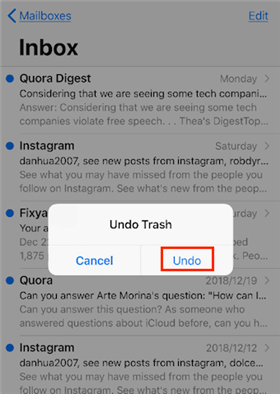
Enable Undo Trash
Step 3. After that, you’ll see the deleted email has come back to the Inbox. But it says “This message has no content.” Don’t worry, iOS doesn’t bring the recovered email back onto the screen, but it indeed recovered.
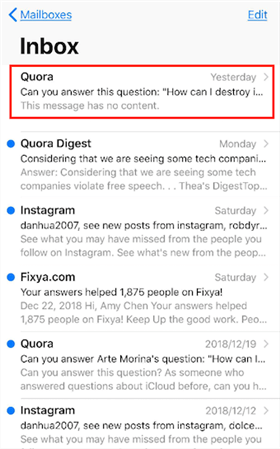
Deleted Email Comes Back to Inbox
Step 4. Tap Inbox, Mailboxes, or close the Mail app and reopen it, whatever control takes you out of the email view and then back to the inboxes, you’ll see the recovered email right there.
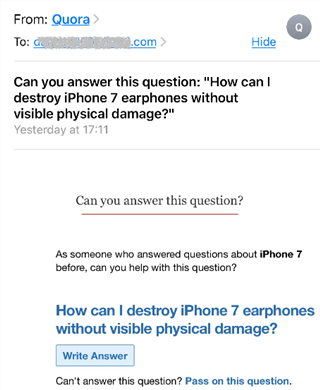
Click Into Inbox and View the Email
Two points need to be noticed: One is that this Undo action is a single-step undo, you can’t use it to undo more than one action, which means that you can only undo one previous action. The other one is that you do this undo gesture immediately after deleting your email, which hasn’t been a long time, and didn’t reopen the app, otherwise, you can’t retrieve them with undo feature.
Recover Accidentally Deleted Emails on iPhone from Trash
Actually, when an Email is deleted from your iPhone or iPad mail inbox, it is not exactly permanently removed from your device immediately. It first gets been moved to the Trash folder, but that doesn’t mean it’s always in there. Your iPhone or iPad will perform the second and permanent deletion after about one week (by default).
If you realized you deleted Emails by accident in time, then you can follow the steps below to get them back.
Step 1. On your iPhone or iPad, launch the Mail app.
Step 2. Tap on Mailboxes.
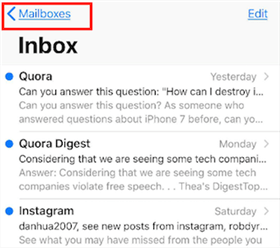
Tap on Mailboxes
Step 3. Select the Trash icon and tap it.
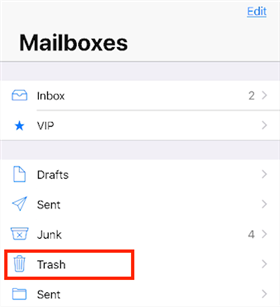
Find Trash Icon and Click
Step 4. Tap the Edit button.
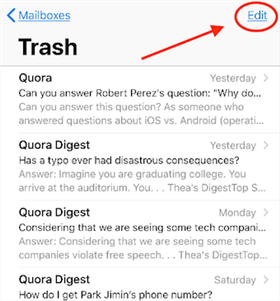
Tap on Edit Button
Step 5. Select the Emails you want to recover and hit the Move button.
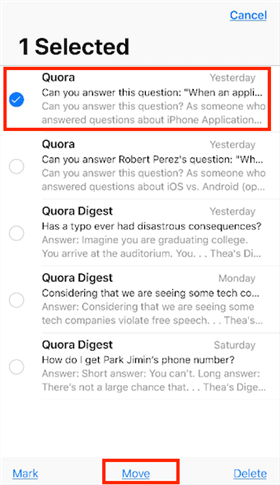
Select the Email and Move to Inbox
Step 6. Select the folder you want to move it to and check it afterward.
How to Recover Permanently Deleted Emails from Gmail on iPhone
Is it possible to recover permanently deleted emails from Gmail? Usually, Gmail also has a trash folder to store deleted emails for 30 days. After that time, emails will be permanently deleted from Gmail and can’t be recovered. Therefore, you can recover deleted emails from Gmail on your iPhone within 30 days since you deleted them. Here are the steps:
- Open the Gmail app on your iPhone or iPad.
- Tap on the Menu icon (the three horizontal lines).
- Find the Trash option and click it.
- Here are the emails that you deleted. Click the Avatar or press and hold the emails multiply.
- Click More and choose Move to.
- Then move and recover the deleted emails to a folder.
Further Reading: How to Recover Gmail Password without Phone Number/Recovery Email >
Bonus Tip: Recover Permanently Deleted Voicemails on iPhone
If you delete other important data on your iPhone iPad like voicemails, photos, messages, notes, calendars, videos, and more, you can try on PhoneRescue for iOS – a reliable iOS data recovery tool. It allows you to recover permanently deleted iPhone data from iPhone backups without restoring the phone. You can also get deleted files back on your Apple devices without a backup. Besides, you can repair various iOS issues that caused messages to disappear, etc.
Free Download * 100% Clean & Safe
Here are the steps to recover deleted voicemails on iPhone:
Step 1. Once you get PhoneRescue for iOS on your computer. Make sure your iPhone is connected to the computer. Open the software and choose Recover from iOS Device.
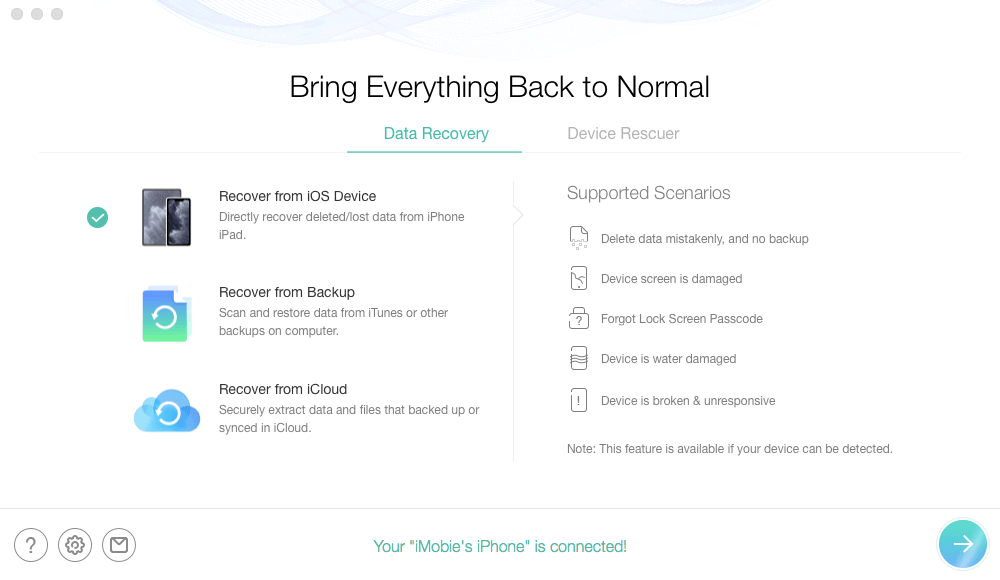
Recover from iOS without Backup
Step 2. Choose Voicemail under the Personal Data category to scan.
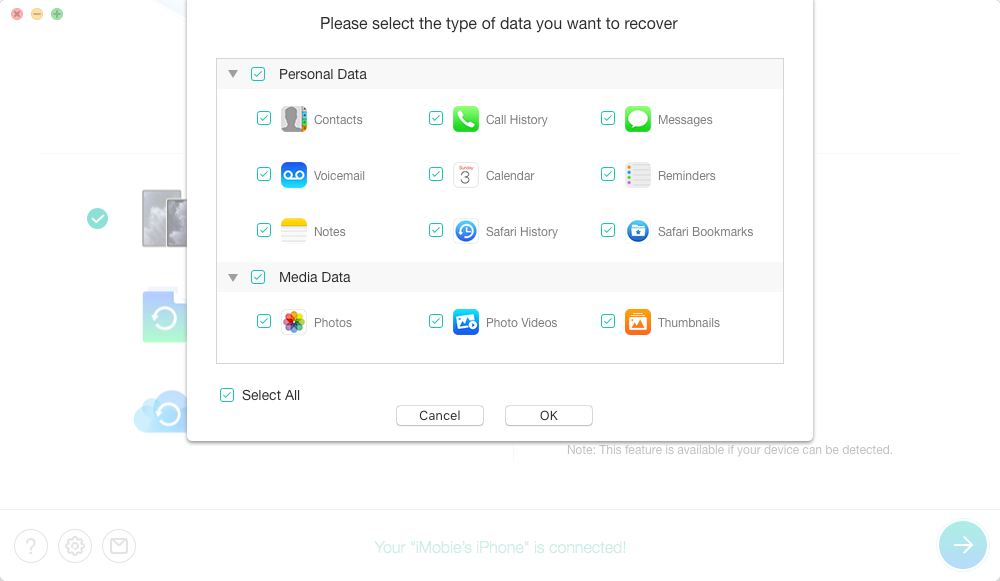
Choose Voicemail to Scan
Step 3. Preview all voicemails, and choose what you want to recover.
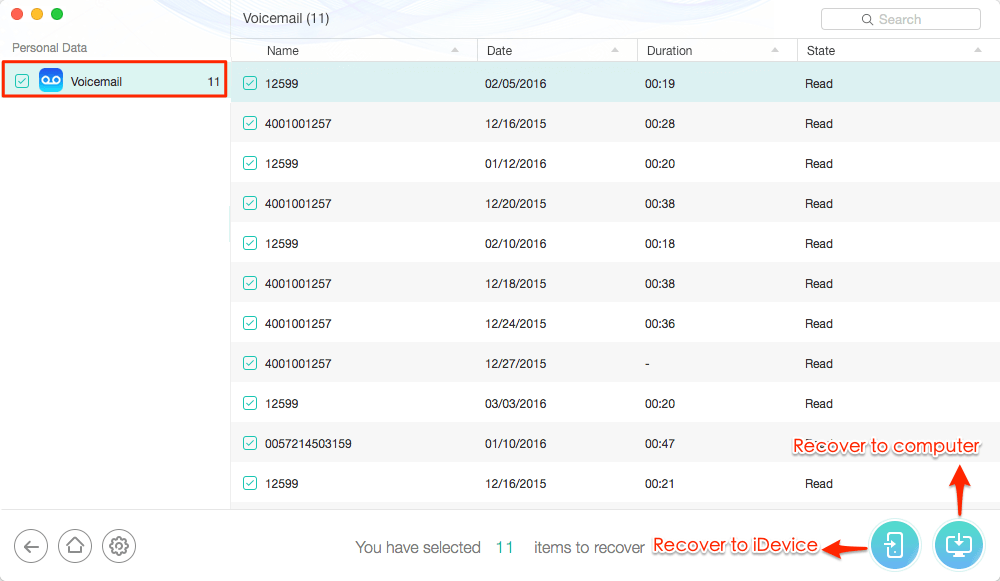
Get Back Deleted Voicemail to iPhone
The Bottom Line
As you see, here are some methods that can help you recover deleted Emails on your iPhone or iPad, no matter who your email provider is. If you feel this article is helpful, welcome to share it with your friends and families. And, you can use PhoneRescue for iOS to fix any other data loss on your iPhone. It supports all iPhone models, including the latest iPhone 13 or iPhone 12.
Product-related questions? Contact Our Support Team to Get Quick Solution >

